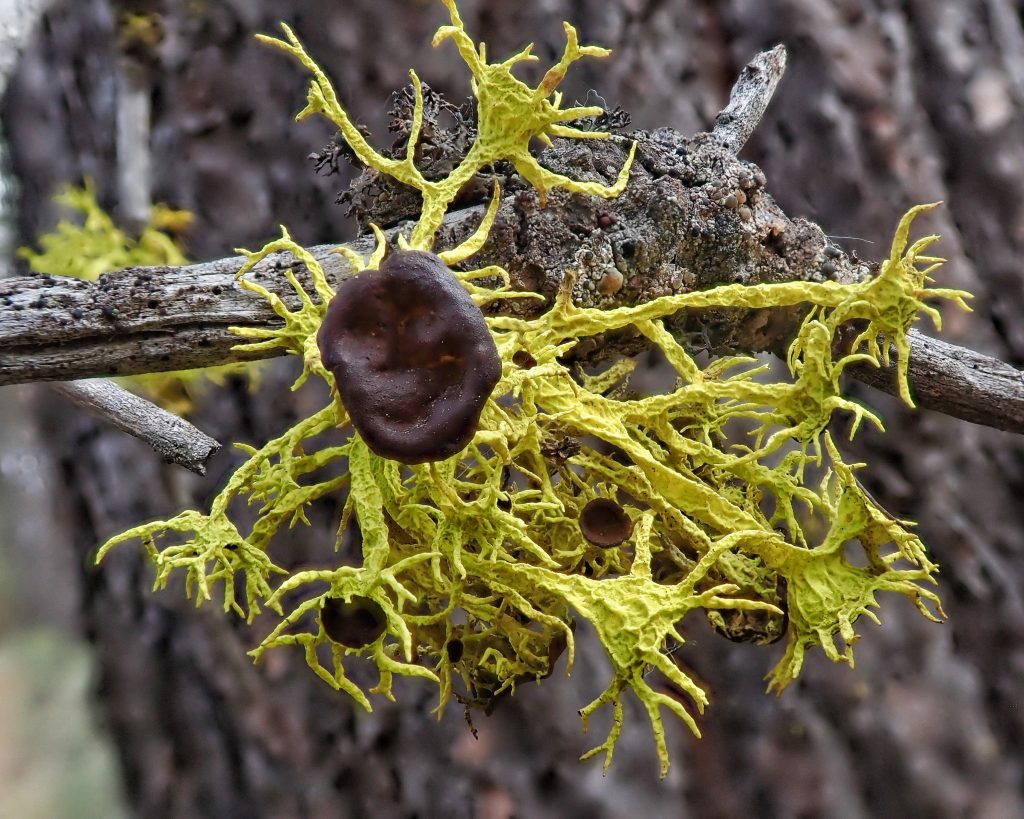
I was excited to finally find this lichen, often known by the common name of brown-eyed wolf lichen, two weeks ago in the ponderosa pine forest alongside the Metolius River. It has been on my wish list since I got a copy of “Macrolichens of the Pacific Northwest” (McCune/Geiser;2009), and saw a photograph of it on the cover. I have spent a fair amount of time in good habitat since that time, but all of the chartreuse lichens I had examined were Letharia vulpina complex, or Vulpicida canadensis. But when I did find it (and made an audible whoop), it was abundant, with dozens of specimens visible from where I stood amidst the trees.
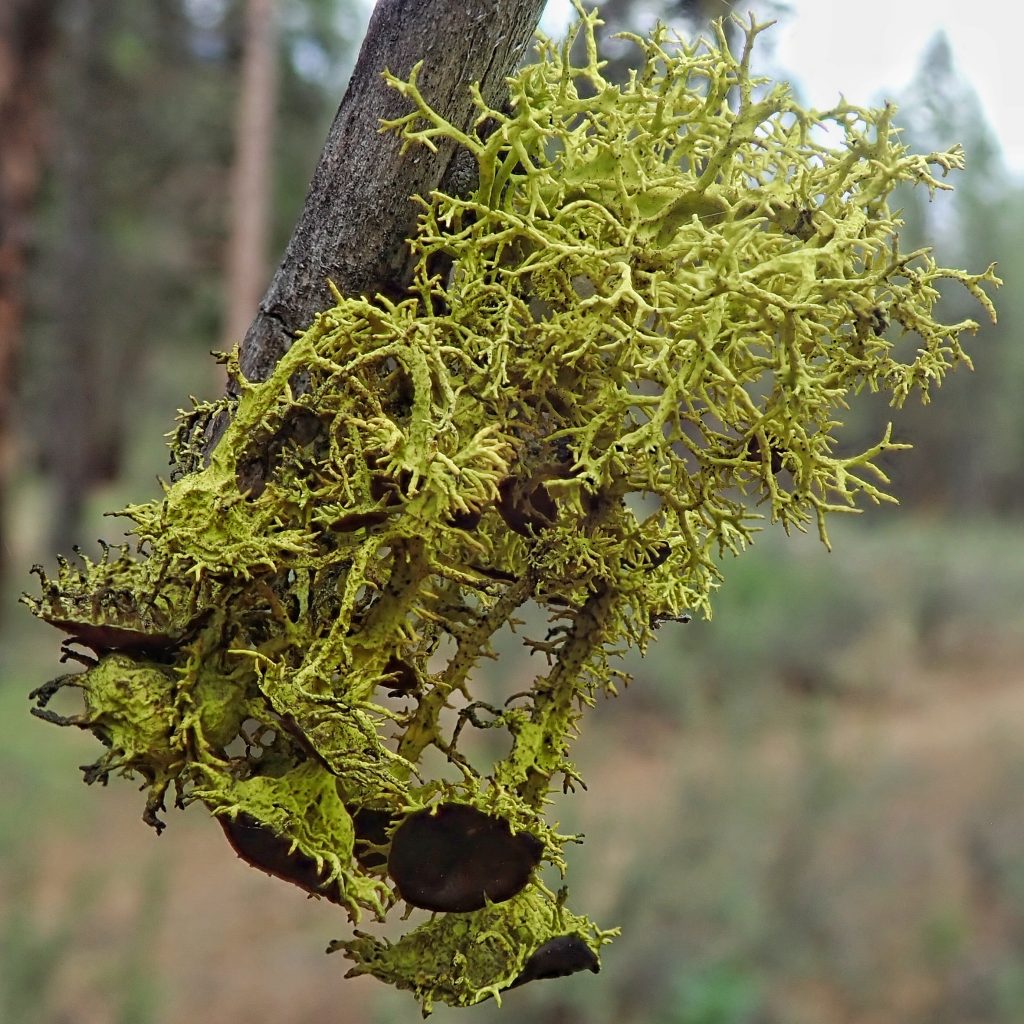
This lichen is the sexually reproducing lineage from which the asexual Letharia vulpina complex is descended. And, like other Letharia spp. it has at least two yeast components to go with the fungal/photobiont symbiosis we think of as comprising lichen. There are two interesting papers that discuss this, which can be found here and here, and I talk about it in more depth in my profile of the Letharia vulpina complex.
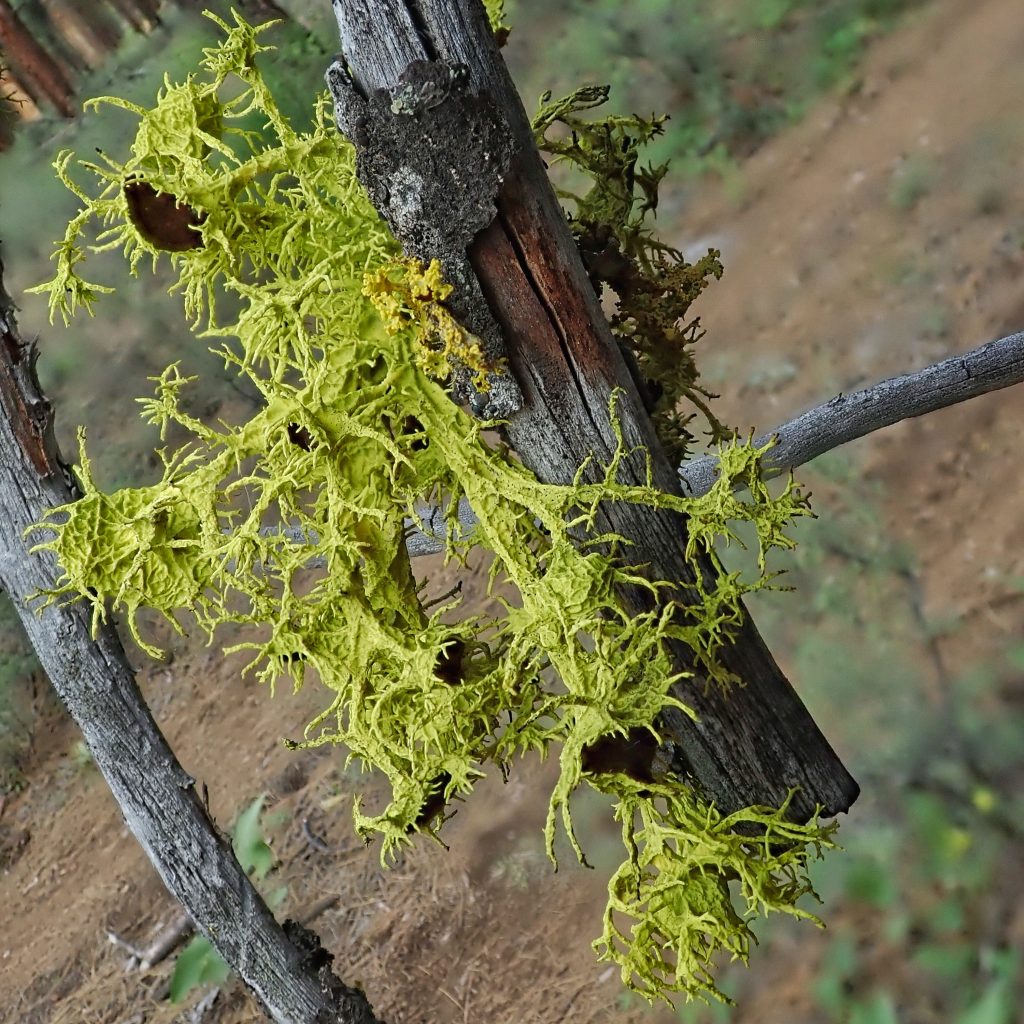
It is likely that Letharia columbiana will eventually be segregated into multiple taxa. Altermann /Leavitt/Goward (2016) attempted to do so, but the type specimens were very old and contaminated by Letharia vulpina, and the results were ambiguous. However, they saw enough to believe that additional taxa have validity, especially L.’lucida’, L. ‘barbata’, and L. ‘rugosa’. But only time, and molecular testing, will tell.
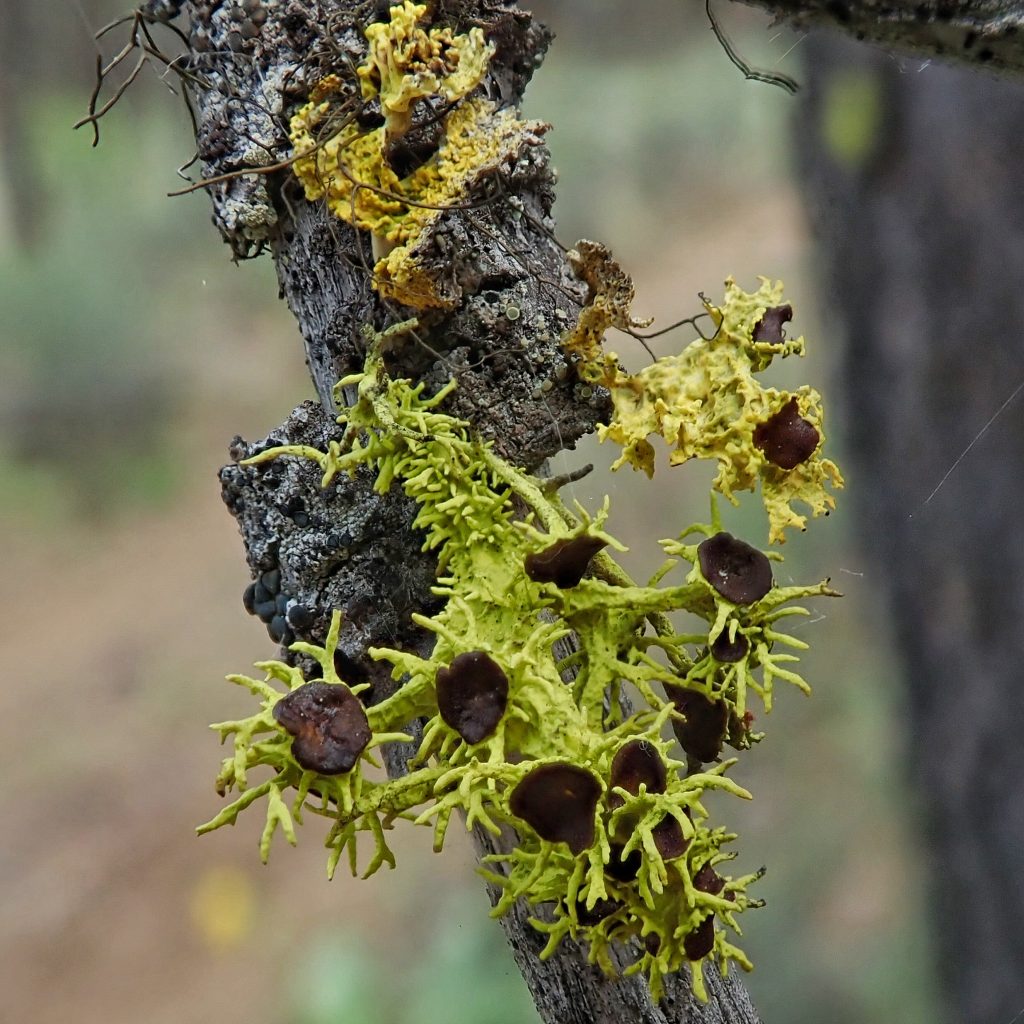
Letharia columbiana was used (occasionally mixed with rattlesnake venom) by indigenous peoples for poison tipped arrows. Oddly, considering its toxicity, it was also used by other tribes as a balm for sores and lacerations, and as an internal medicine for stomach ailments. But its most common usage was as a bright yellow dye, which was made by boiling the lichen in water.
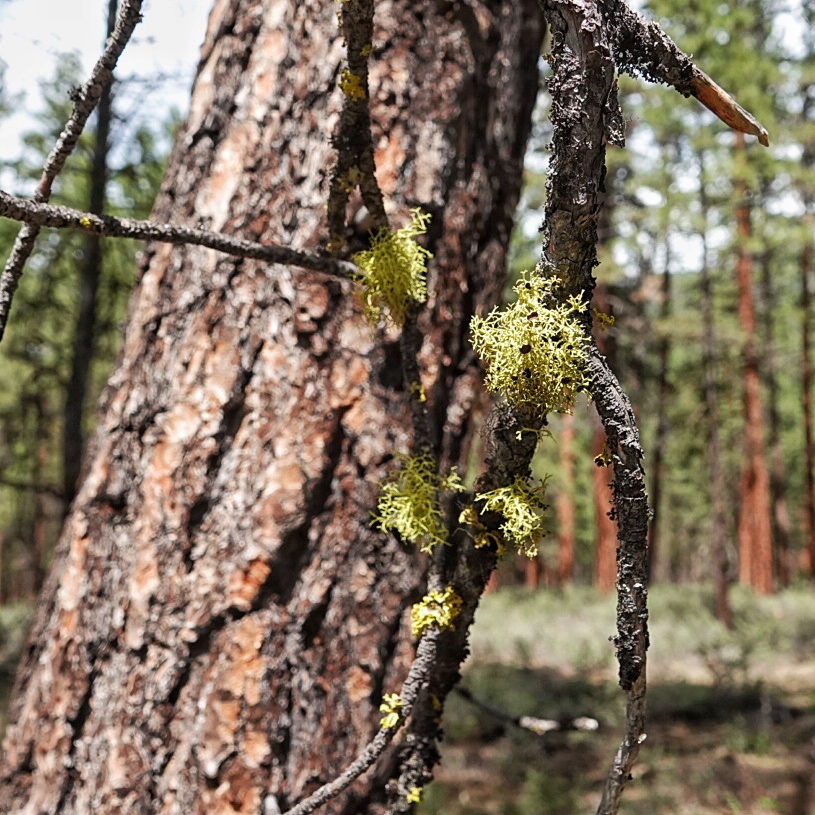
Description– Fruticose, many branched chartreuse lichen with abundant and often large brown apothecia; it usually forms tufts and is anchored by a single holdfast; it lacks soredia, and isidia are either sparse or lacking.
Similar species–Letharia vulpina complex has isidia and soredia, and usually lacks apothecia, and Vulpicida canadensis is a thalloid, rather than fruticose, lichen.
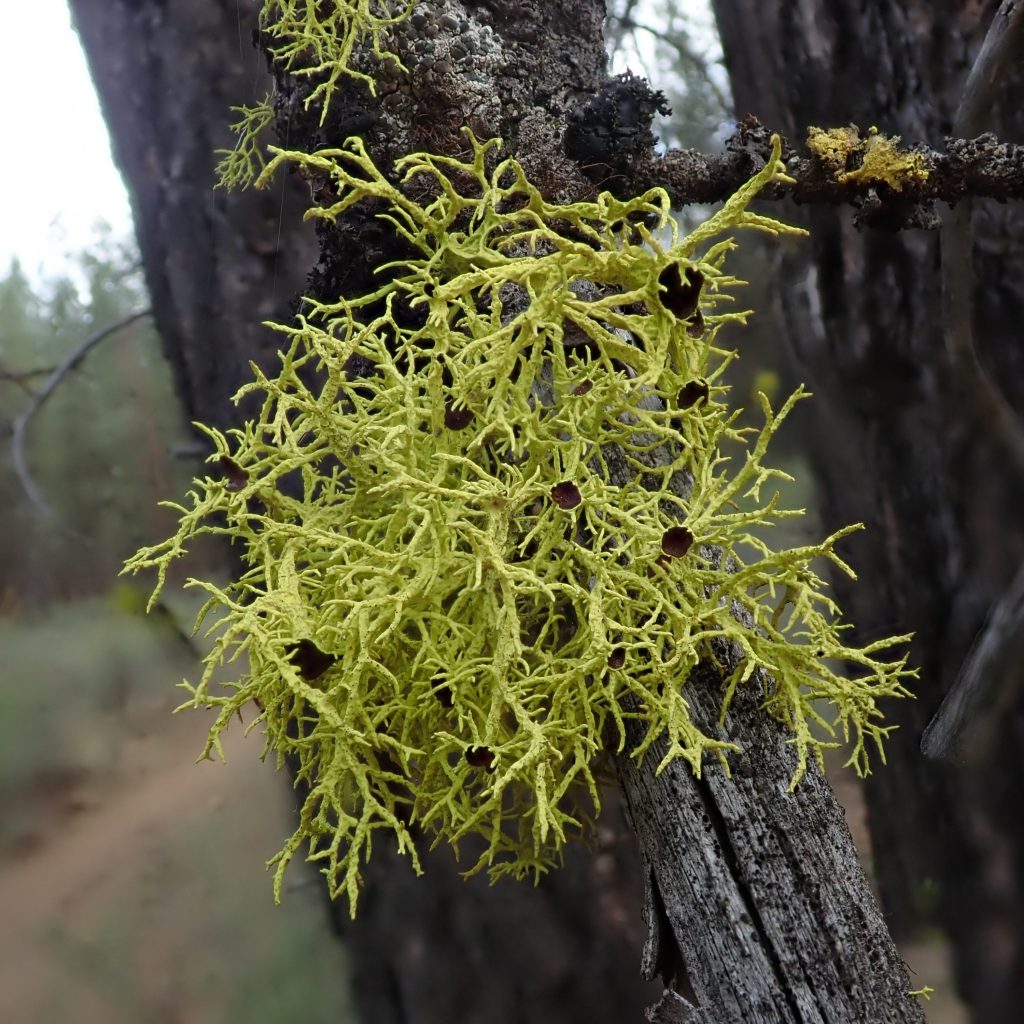
Habitat– On wood or bark in forests from low to high elevations; most common on pines and east of the Cascade crest.
Range-Western North America; region wide except for along the coast and se Oregon and s Idaho;
Reproductive timing– Produces apothecia year around
Eaten by– I can’t find any information about animals actually eating this lichen, but it is possible that some do, since vulpinic acid is only poisonous to carnivorous mammals.
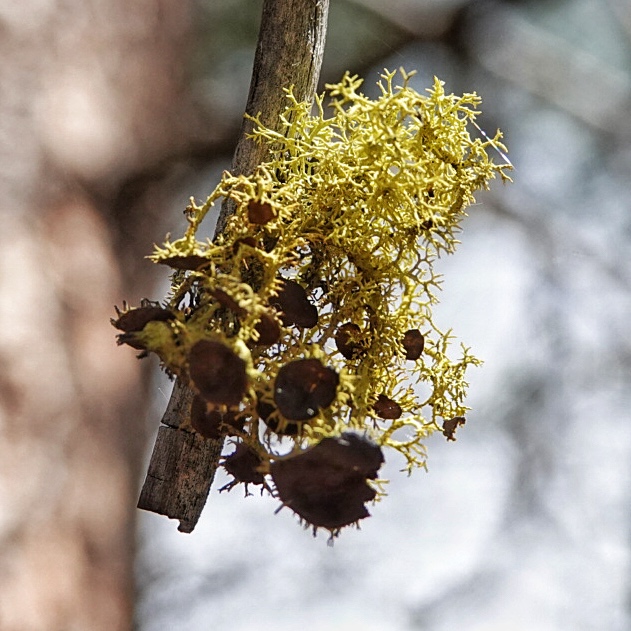
Etymology of names–Letharia is from the Latin for ‘very deadly’, in reference to the toxicity of vulpinic acid. The specific epithet columbiana commemorates the fact that Thomas Nuttall found the specimen he first described along the Walla Walla River, near where it enters the Columbia River.
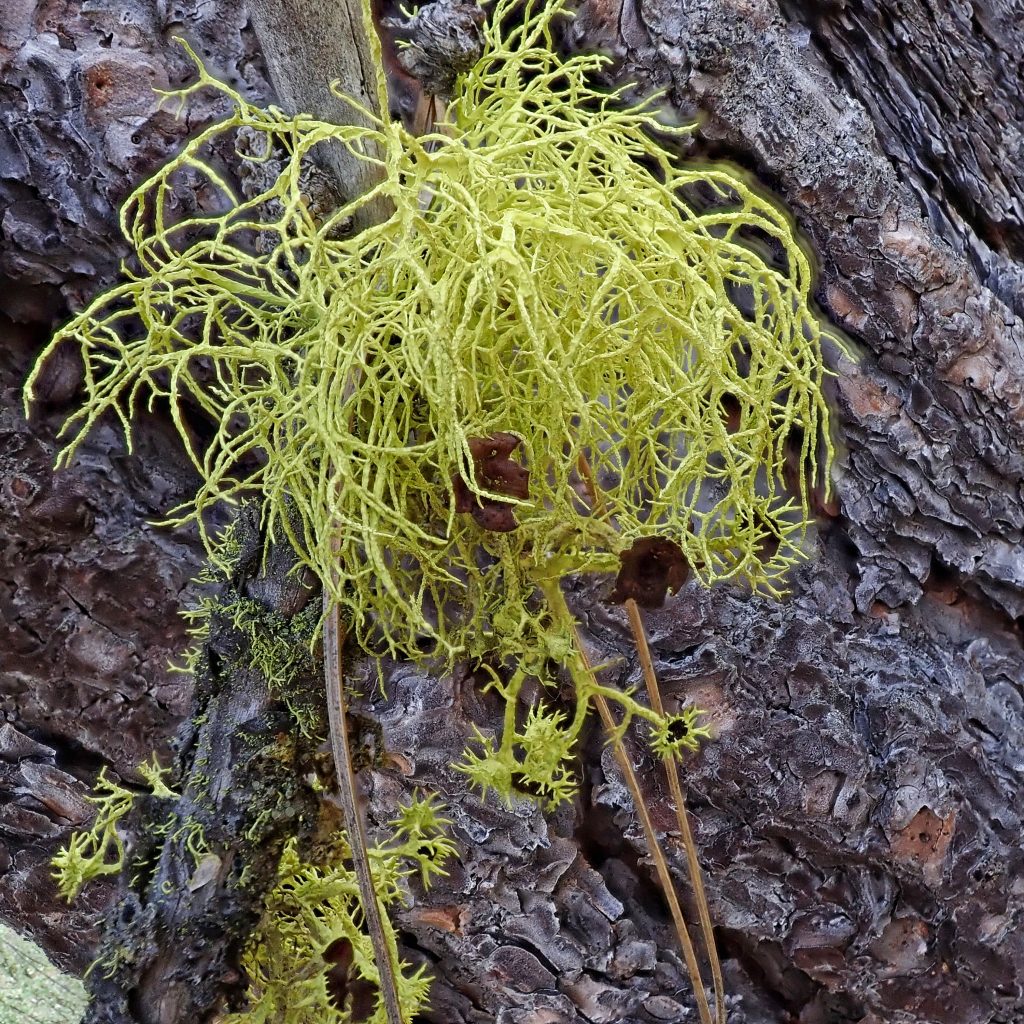
https://lichenportal.org/cnalh/taxa/index.php?taxon=54470&clid=1112
http://nathistoc.bio.uci.edu/Fungi/Letharia%20columbiana.htm
Letharia columbiana – Common Macrolichens of the Pacific Northwest
Not One, Not Two, But Three Fungi Present in Lichen | The Scientist Magazine®
Basidiomycete yeasts in the cortex of ascomycete macrolichens | Science
How a Guy From a Montana Trailer Park Overturned 150 Years of Biology – The Atlantic
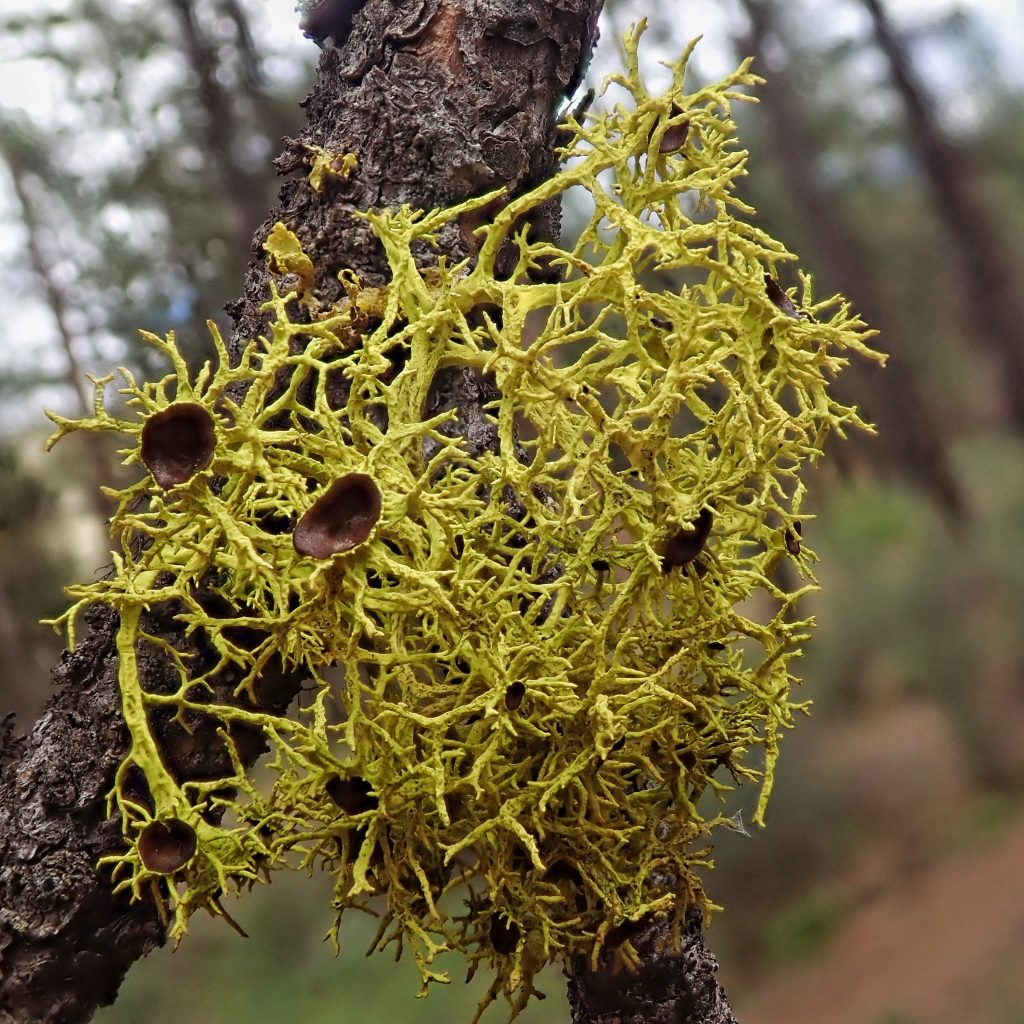
Thank you for such a great post on Letharia columbiana! I also remember my excitement for finding my first specimen! We had tiny apothecia on the ones we found on our Prineville property and found the big ones in the Metolius area as well!
Thank you for your appreciation, Kyla! It is a very cool lichen!
I appreciate and enjoy this site. I’m an Oregonian, amateur mycologist and lichen is a new love to learn for me. Thank you for this
Thank you for your appreciation, Danielle! Lichen are amazing organisms!